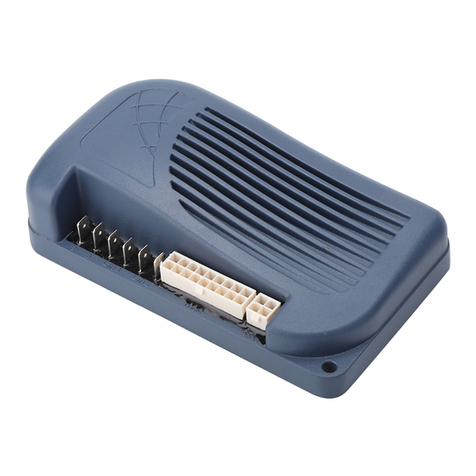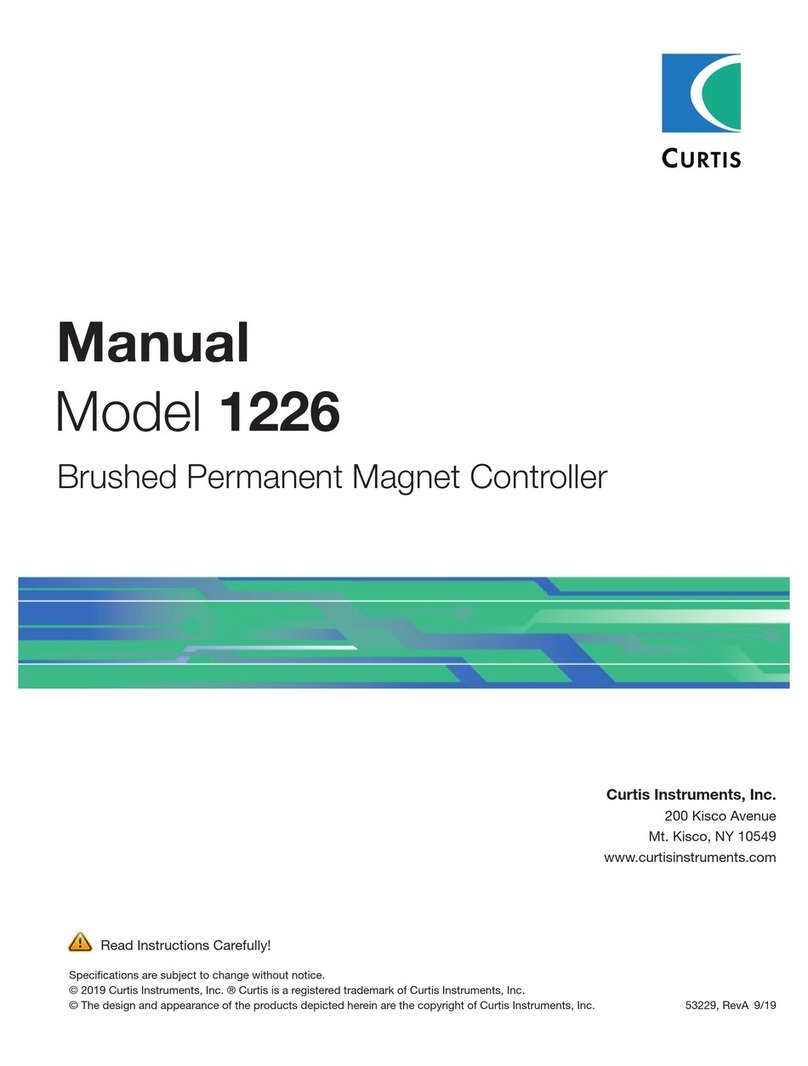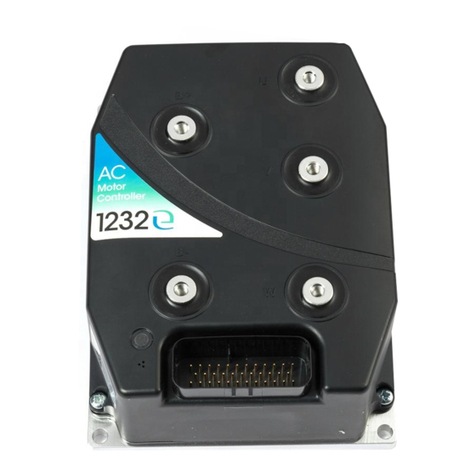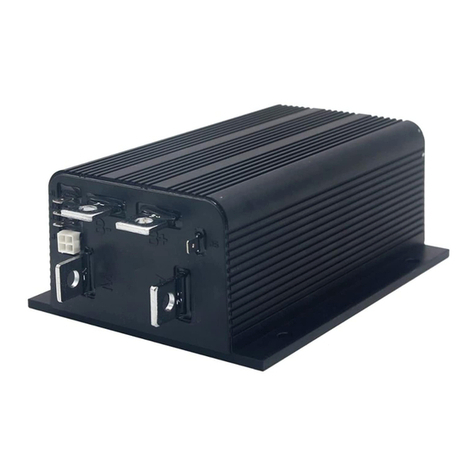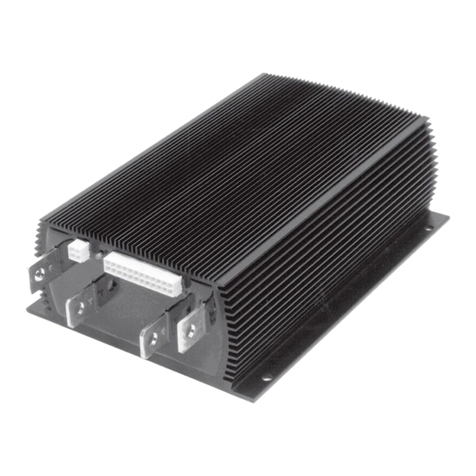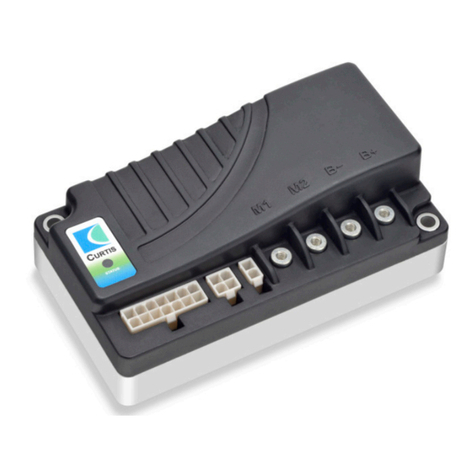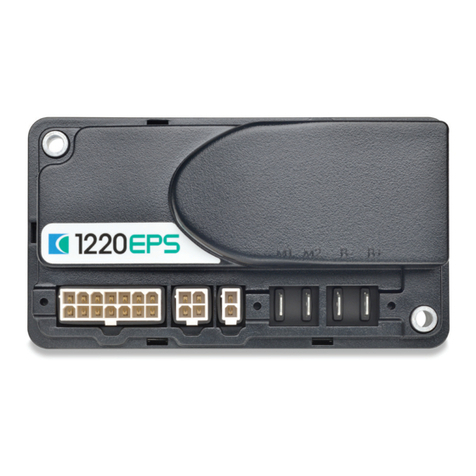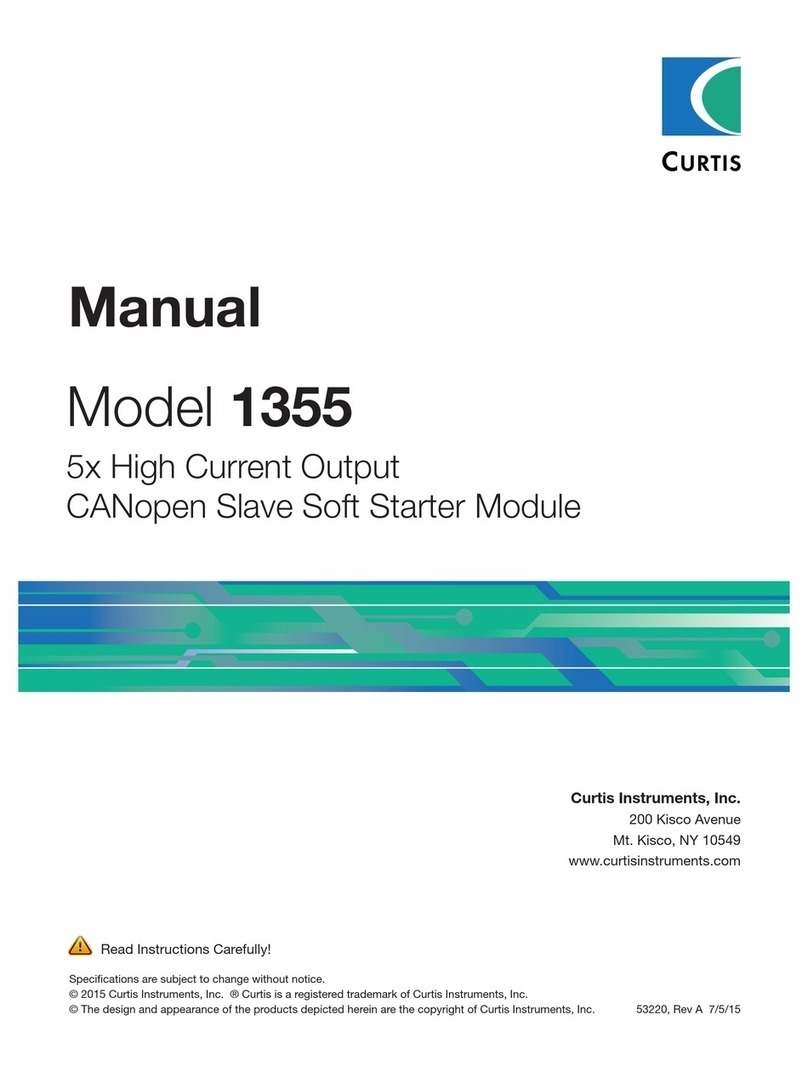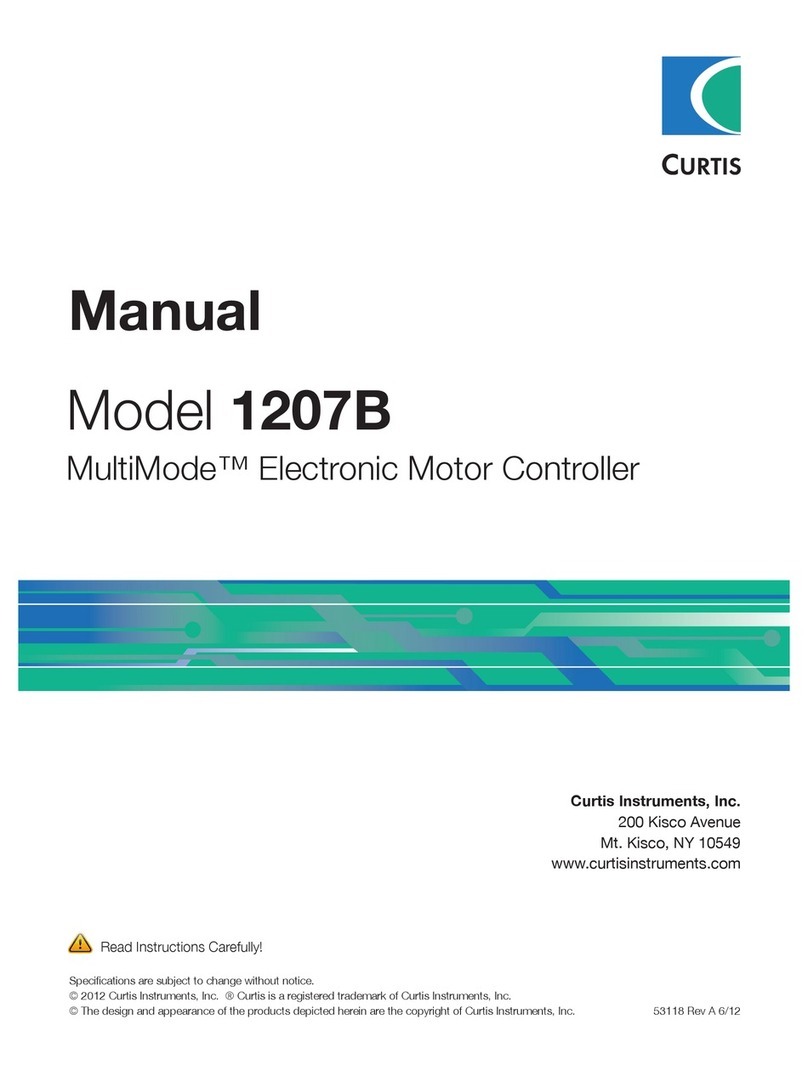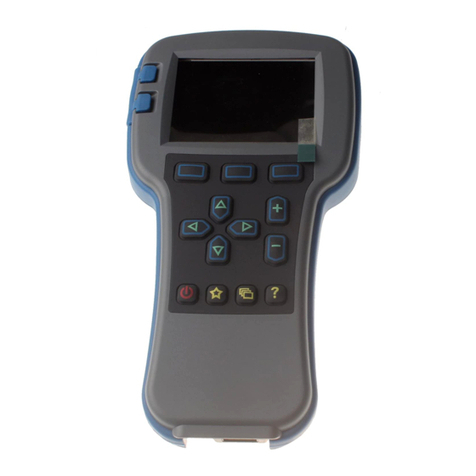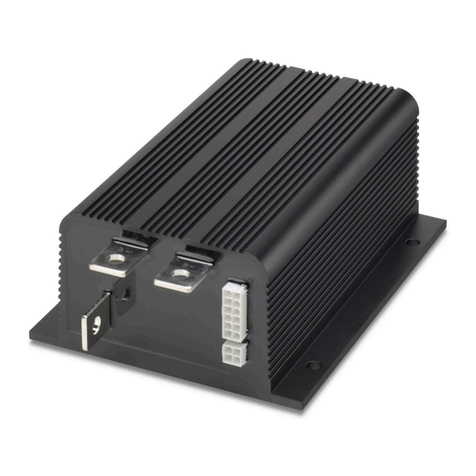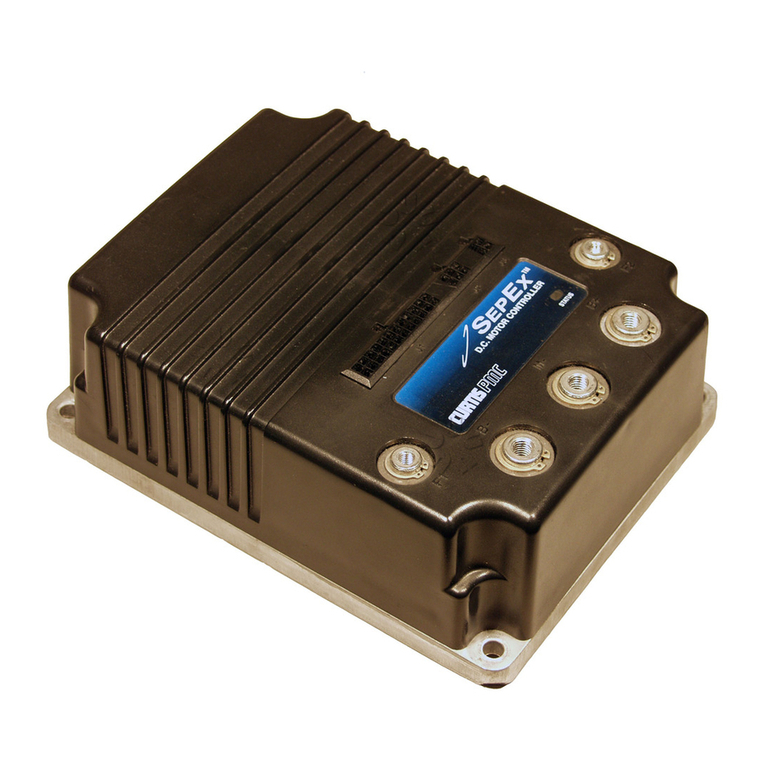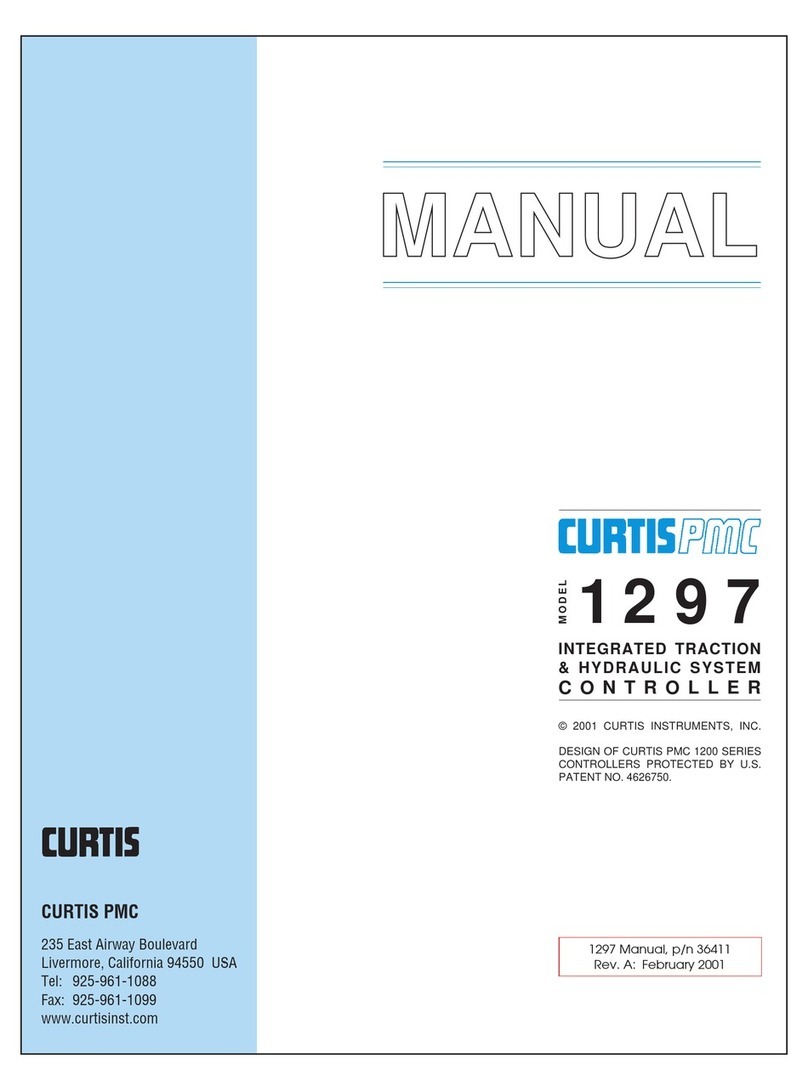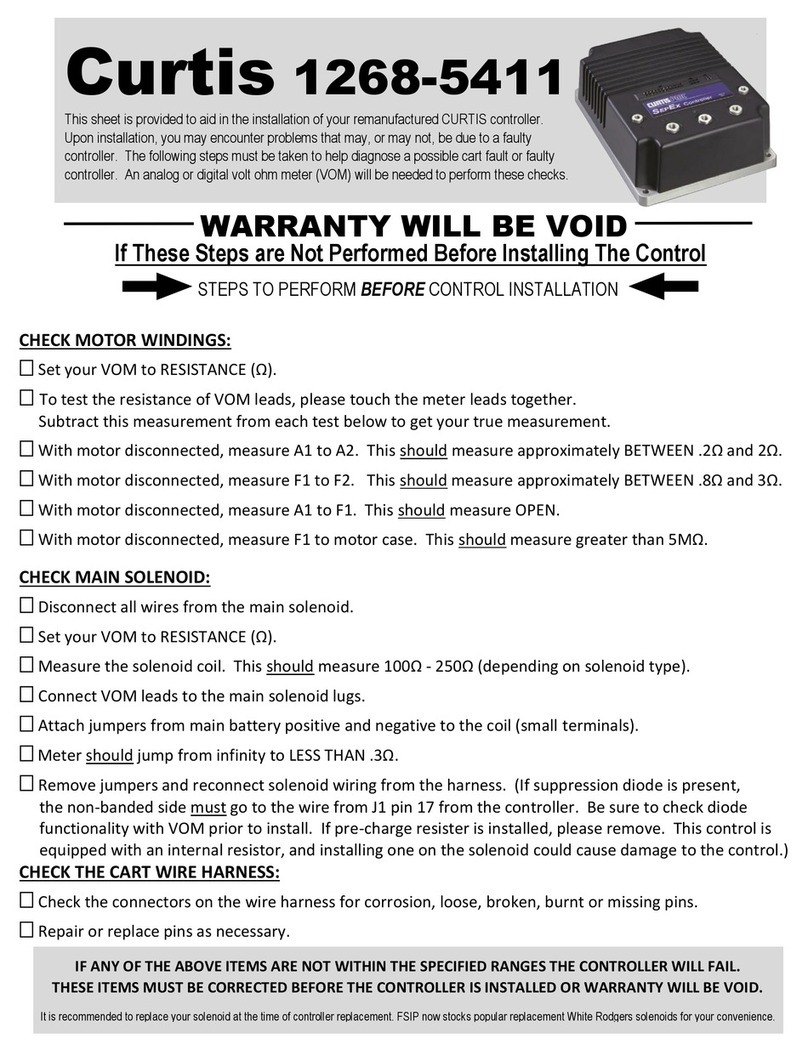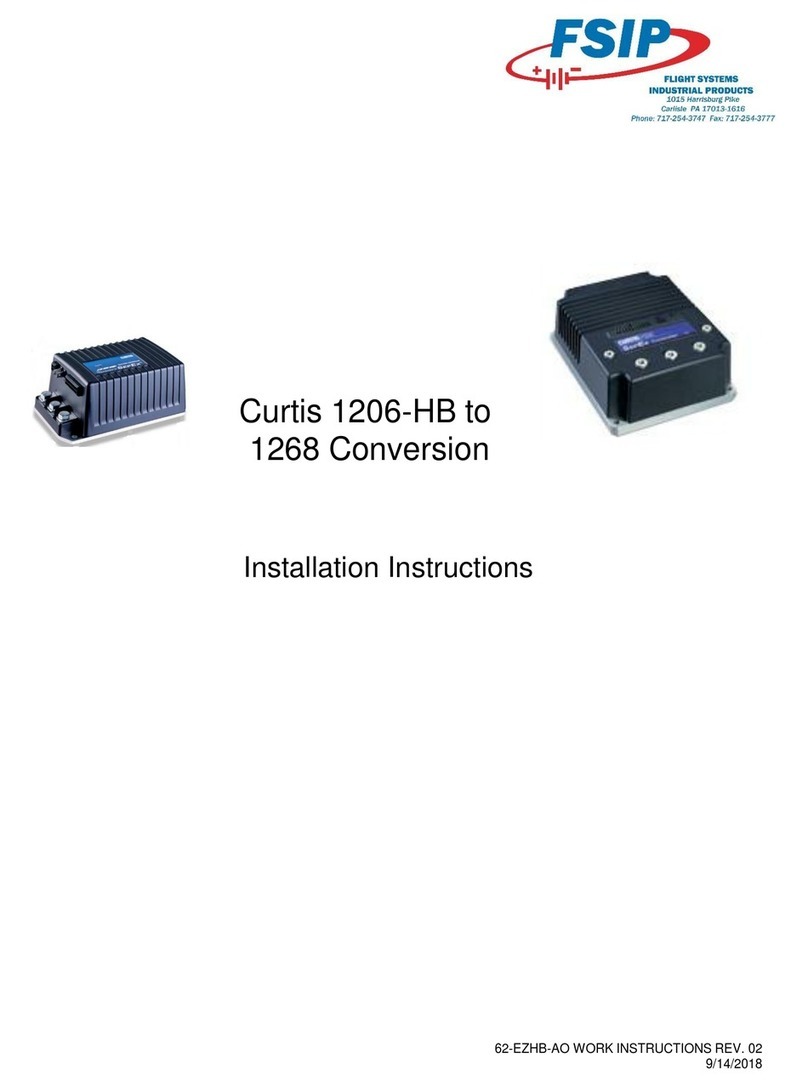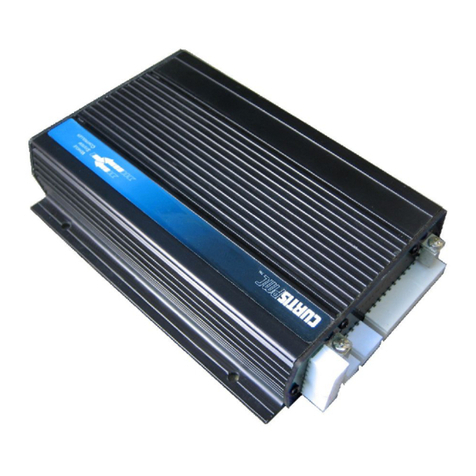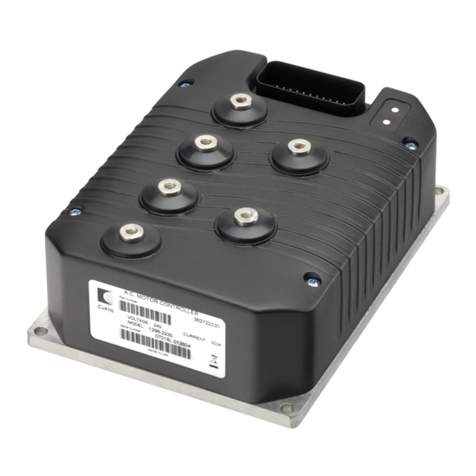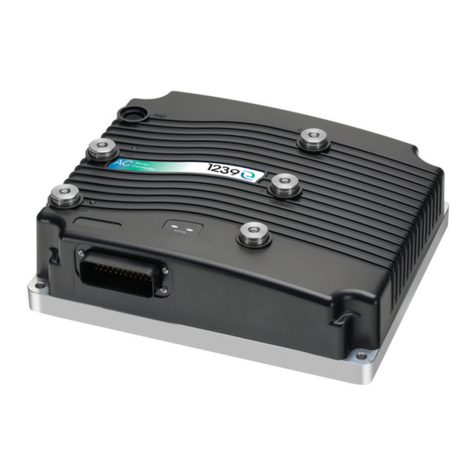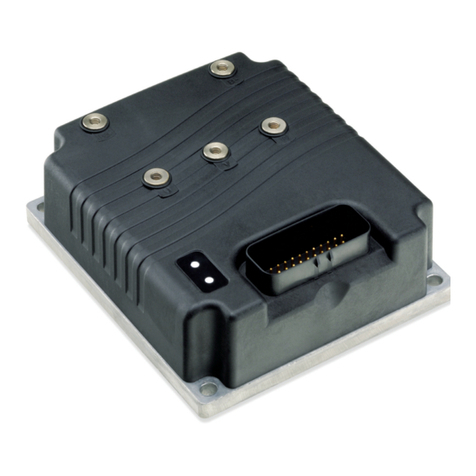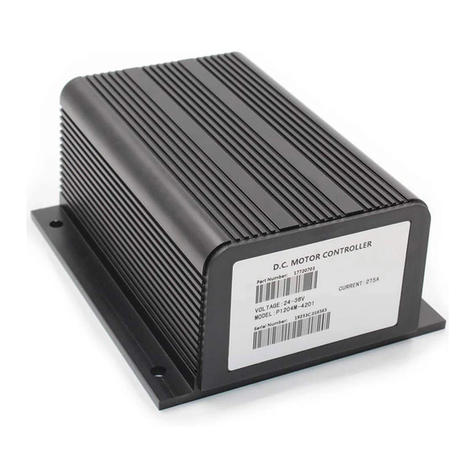
3 — PROGRAMMABLE PARAMETERS pg. 7
Return to TOC Curtis 1232E/34E/36E/38E/39E & 1232SE/34SE/36SE/38SE Manual, os 31 – May 2017
DUAL DRIVE MASTER MENU
PARAMETER ALLOWABLE RANGE DESCRIPTION
Steer Angle Max (deg)
Dual_Steer_Angle_Max
0x38A3 0x00
45 – 90 deg
45 – 90
Set this to the maximum steer angle that is physically possible on the vehicle.
(Steer Angle is the angle-in-degrees that the steer wheel(s) "turn" from their
center/straight-ahead or zero-degree position)
Turn Accel Rate
Dual_Turn_Accel_Rate
0x38A8 0x00
0.1 – 30.0 s
100 – 30000
As the steering angle increases from the edge of the deadband to the
critical angle (Critical Angle), the acceleration rate is reduced linearly from
the normal value to the programmed Turn Accel Rate (see Figure 6). Higher
values represent slower acceleration.
This parameter appears in multiple places. Changing the value of this
parameter affects all parameters listed below:
Program » Dual Drive » Slave » Turn Accel Rate
Program » Dual Drive » Turn Feedforward » Turn Accel Rate
Critical Angle (deg)
Dual_Critical_Angle
0x38A6 0x00
45 – 90 deg
45 – 90
Set this parameter to the angle at which the vehicle pivots around its inner
wheel. Use the equation on page 9 to determine the critical angle.
This parameter appears in multiple places. Changing the value of this
parameter affects all parameters listed below:
Program » Dual Drive » Slave » Critical Angle (deg)
Max Turn Speed
Dual_Max_Turn_Speed
0x38A7 0x00
0 – 100 %
0 – 32767
As the steering angle increases from the edge of the deadband to the
maximum steer angle (Steer Angle Max), maximum speed is reduced
linearly from the normal value to the programmed Max Turn Speed
(see Figure 6).
Inner Wheel Speed
Dual_Inner_Wheel_Speed
0x38A9 0x00
–100.0 – 0.0 %
–32767 – 0
Set this parameter to the Inner wheel speed as a percentage of outer wheel
speed when the steer angle is 90 degrees. Use the equation on page 9 to
determine the appropriate percentage.
Steer Type PCF
Dual_Steer_Type
0x38AB 0x00
1 – 5
1 – 5
Set this parameter to the appropriate type for the steering pot you are using:
1. 2-wire rheostat, 5kΩ–0 input
2. Single-ended 3-wire 1kΩ–10kΩ potentiometer, 0–5V voltage source,
or current source
3. 2-wire rheostat, 0–5kΩ input
4. (not applicable)
5. VCL input (VCL_Steer).
NOTE: Do not change this parameter while the controller is powering the
motor. Any time this parameter is changed a Parameter Change Fault (fault
code 49) is set and must be cleared by cycling power; this protects the
controller and the operator.
Steer Pot Min
Dual_Steer_Pot_Min
0x38AC 0x00
0.00 – 6.25 V
0 – 32767
Set Steer Pot Min to the voltage on the steering pot when steering as far as
possible clockwise. Determine the value by reading the voltage on the pot
when steering CW to the maximum position.
Steer Pot Zero
Dual_Steer_Pot_Zero
0x38AD 0x00
0.00 – 6.25 V
0 – 32767
Set Steer Pot Zero to the voltage on the steering pot when steering
straight ahead. Determine the value by reading the voltage on the pot when
steering straight.
Steer Pot Max
Dual_Steer_Pot_Max
0x38AE 0x00
0.00 – 6.25 V
0 – 32767
Set Steer Pot Max to the voltage on the steering pot when steering as far as
possible counterclockwise. Determine the value by reading the voltage on
the pot when steering CCW to the maximum position.
VCL Steer Enable
|VCL_Steer_Enable
|VCL_Steer_Enable_Bit0 [Bit 0]
0x38A5 0x00
On / Off
On / Off
Setting this to On allows VCL to be used for additional steering processing.
